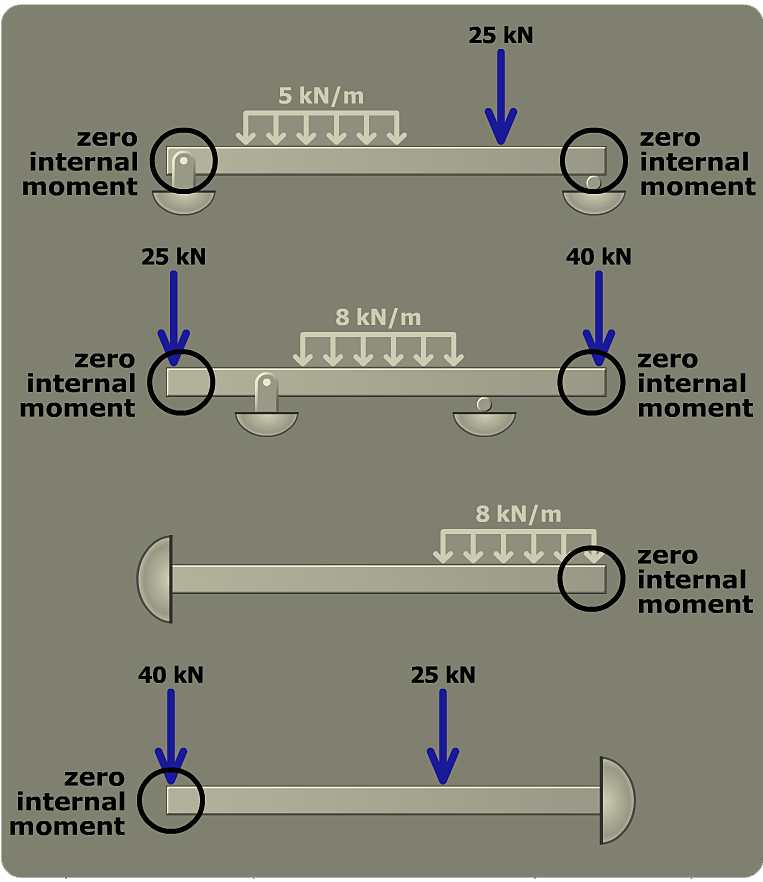
In constructing the bending-moment diagram, it is also helpful to take note of the support condition at each end of the beam. At a free end of the beam, the internal bending moment is always M = 0. Several typical beam end conditions are shown in the figure to the left.